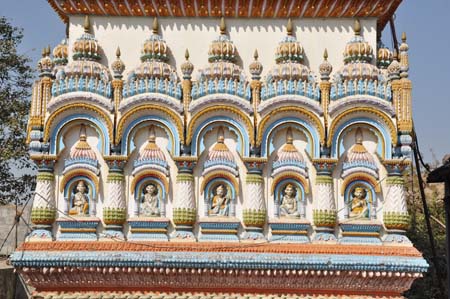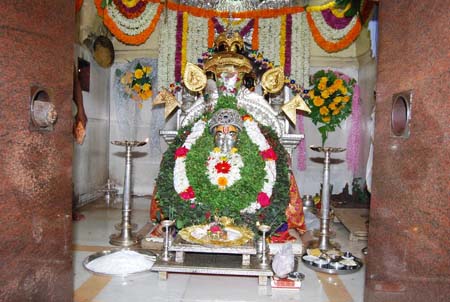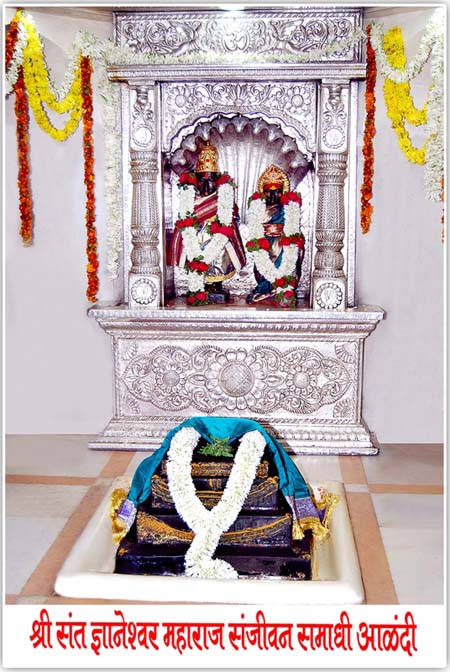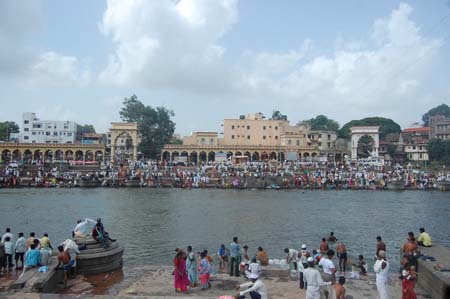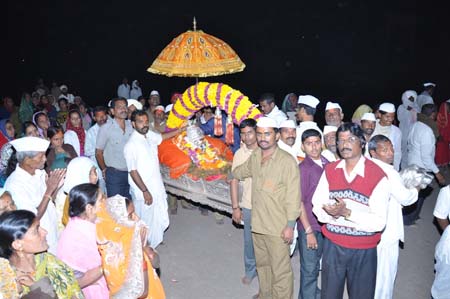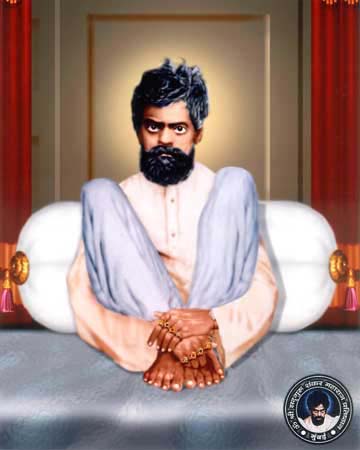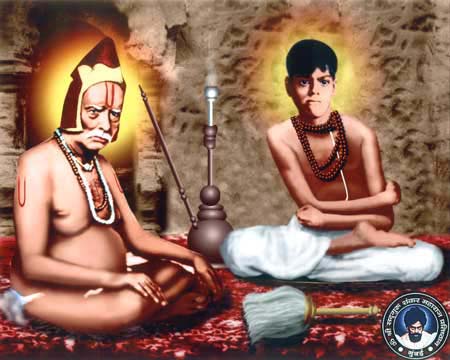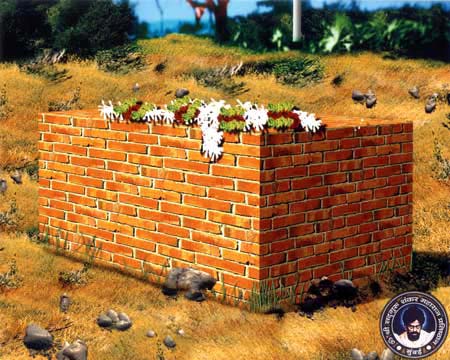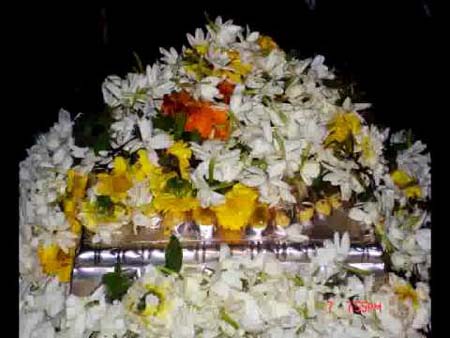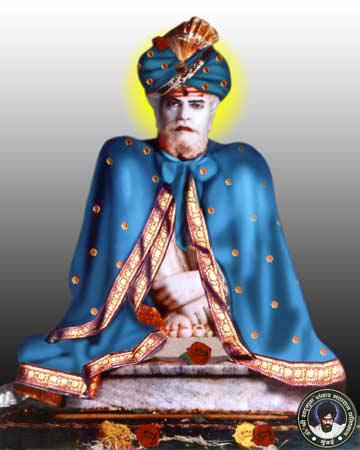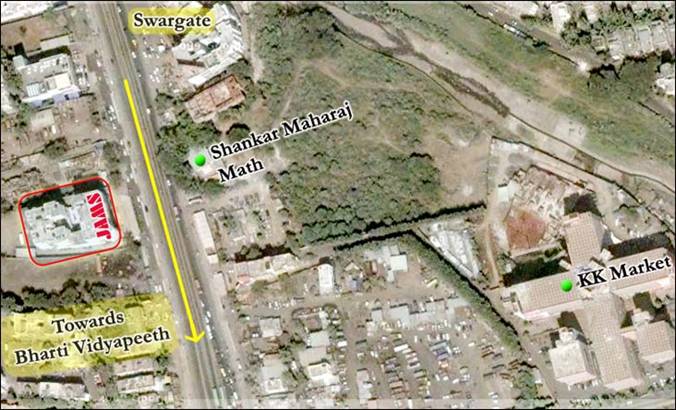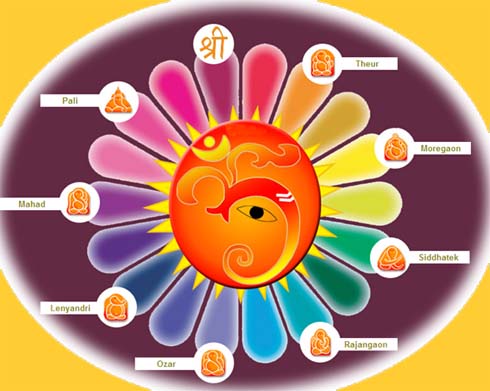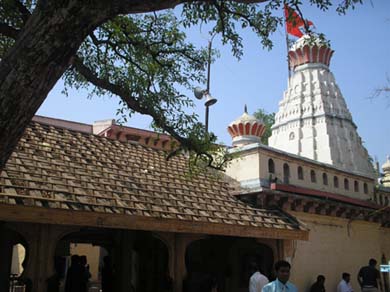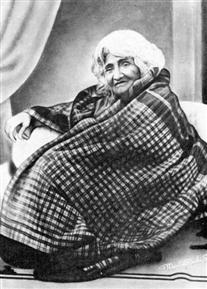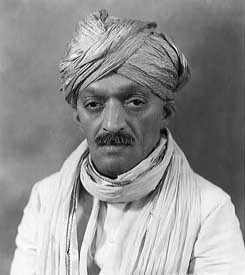Places Around Pune
ALANDI – SAMADHI OF SANT DNYANESHWAR Alandi, a small city in the district of Pune of Maharashtra state of India is around 25 km way from the city of Pune. The Marathi word Alandi is a corruption of the Sanskrit Alankapuri. The place is popularly known for the Samadhi Mandir of Saint Dnyaneshwar. Since ancient times, the village has been a shrine of Shiva as Siddheshwar, Lord of Spiritual Attainment. Today, the Alandi Dnyaneshwar temple is a major pilgrimage center, drawing hundreds of thousands of devotees on festival days. Alandi is hallowed by the presence of Sant Dnyaneshwar here in the 13th century. Sant Dnyaneshwar was born in 1275. He was the disciple of Swami Ramanand. Sant Dnyaneshwar is the author of 'Dnyaneshwari', a commentary on the holy Bhagavad Gita. He believed that the chanting of the name of the Lord is the best way to reach Him. Sant Dnyaneshwar had performed the miracle of making a buffalo recite the Vedas. Dnyaneshwar remains one of India’s most beloved saints and his Samadhi Shrine in Alandi (in which he was voluntarily entombed in Nirvikalpa Samadhi while alive) is visited by thousands of people every year. He is widely revered as an incarnation of Krishna. Centuries later, Sant Eknath entered the tomb and saw a radiant youth seated in meditation. Dnyaneshwar is still believed to be alive, anchoring his light body as a crystal of enlightened energy radiating from Alandi to the entire world.
Maharashtra State, like many others in India, has a rich tradition of saints. These saints in Maharashtra were not just the sages and seers staying as recluse and preaching renunciation; but were rather visionary reformists. The first among them was Saint Dnyaneshwar who founded the Bhagwat Sect in the Hindu religion in an attempt to eradicate all sorts of discriminations in society. The Bhagwat Sect is best known as the sect of the devotees of Lord Pandurang in Pandharpur in Maharashtra. The most significant work of Saint Dnyaneshwar is ‘Bhavarthdeepika’ also known as ‘Dnyaneshwari’ which is a Marathi criticism of the Bhagavadgita in Sanskrit. The work is also considered to be an excellent piece of Marathi poetry. Saint Dynaneshwar is said to have stayed in Alandi for some time of his 21 year short life. He took Samadhi here at the age of 21 and ended his life. A beautiful temple has been constructed around the Dnyaneshwar Samadhi on the banks of River Indrayani. The temple has been the spiritual powerhouse for thousands of followers of Saint Dnyaneshwar for centuries together. There is also a temple of Vithoba-Rakhumai in this sacred place.
Apart from the temple, the place is blessed with awesome natural beauty. The temple is surrounded by thick greenery that adds to the solemnity and serenity of the place. The ghat that serves as a beautiful backdrop to the temple adds to the grandeur of the place. Two melas are held here annually: on Ashadh and Kartiki Ekadashi, the eleventh days of Ashadh and Kartik (Hindu months).
During the Pandharpur Pilgrimage every year which is colloquially known as “Vari”, Alandi is crowded as lakhs of devotees flock here for Palkhi Festival in the Marathi month of Ashadh. Pune is well connected from all major cities of India by Road, Rail and Air. Donation to Shri Dnyaneshwar Maharaj Samadhi Temple: The devotees who wish to donate for Annadan Fund can do so by sending money by way of Cash/Cheque/DD in the name of “Shri Dnyaneshwar Maharaj Sansthan Committee, Alandi” at the below mentioned Bank Accounts: Bank: Bank of Maharashtra Or Bank: State Bank of India Contact Details: Shri Dnyaneshwar Maharaj Sansthan Committee (Source: Official Website of Sant Dnyaneshwar Samadhi Temple) |
||||||||||||||||||||||||||||||
Shree Sadguru Shankar Maharaj Samadhi Temple Shree Sadguru Shankar Maharaj is one of the greatest saints in India, endowed with divine powers and is worshipped as God Shiva incarnated in human form. Shree Shankar Maharaj was an Ashtavakra and Ajanubahu saint. His lifespan comprised of 161 years.
Shree Shankar Maharaj had a unique personality. If a person questioned Him in English, He replied with fluency in English. If a Muslim questioned Him in Urdu, he answered the person with the teaching from 'Quran'. Maharaj never attended any school or college, but still He had immense knowledge of every language spoken all over the World. It was a puzzle which always remained unsolved. Maharaj knew the truth beyond the rising of all the languages of the world. He knew the languages of all the animals, birds and people throughout the World. He knew the basics of every language of the World and so He could easily communicate in all the languages. Shree Shankar Maharaj always said, “Drink water after filtering and make Guru after checking his knowledge”. Shree Shankar Maharaj always celebrated festivals of incarnations and death anniversaries of great saints and ascetics and conducted recitation of holy books and sang hymns. Maharaj spoke little but performed many acts. Maharaj’s only aim in life was to save His devotees from their problems and show them the right spiritual path to the Almighty God. He always danced and got engrossed in hymns. Maharaj was a great enlightened ascetic on the spiritual path. Today many devotees are inspired by the instructions and good deeds of Shree Shankar Maharaj.
Assurances of Shankar Maharaj: I am a resident of Kailas,
Yogiraj Shree Sadguru Shankar Maharaj always praised His Guru and recited this Mantra. He said, "This is the ceaseless reiteration of My great Guru Shree Sadguru Swami Samarth of Akkalkot. Me and My Guru is not different from each other. My Guru is one of the ideal spiritual teachers I had got. I always feel glad to visit Akkalkot. All the miracles I performed are due to the blessings of My Guru and it happens only by His wish. I am bound to fulfill all the wishes of the one who do the ceaseless reiteration of My Guru. So worship My Guru and enjoy the divine experiences from Me". Even today, this statement of Shree Shankar Maharaj is turning true.
Samadhi of Shankar Maharaj: In the midst of the year 1946, Shree Shankar Maharaj was traveling in a car accompanied with some of His devotees to Goddess Padmavati Temple . Maharaj joined his hands and sat in front of His beloved Goddess for a long time and took Her blessings. Maharaj sensed that His time to leave the mortal world was near. No one could understand the conversation going on between Maharaj and the Goddess. All at once He got up and started walking briskly towards Katraj Ghat. Maharaj stopped near the foothills of Katraj Ghat at Dhankavdi in the farm of Mr. Malpani who was a devotee of Maharaj. There was a huge well in the farm. Maharaj quenched His thirst with water from the well and stood calmly at one place in the farm and said, "This is the place for My Samadhi temple. This place is blessed with the company of Saint Dnyaneshwar and Goddess Padmavati. I would sleep here forever". Hearing this all the devotees was shocked. On the way back, Maharaj addressed the devotees His last words, "When our clothes become old and turn to rags, then we change them. In the same manner My body has became old. So My soul is going to change the body". All the devotees requested Maharaj to change His decision of self immolation. But Maharaj replied, "The decision of self immolation was been taken 17 years back. Now it is not going to change. It is as firm as a rock". Then the devotees returned back to their respective houses in Pune with a heavy heart filled with sorrow and pain.
Dr.Nagesh Ghaneshwar, Barrister Raosaheb Mehendale, Yogi Dnyananathji Ranade, Professor Bhalchandra Deo and Motiwale Lagu Pandit once came to meet Shree Sadguru Shankar Maharaj. After a talk, Maharaj said, "Rau! These clothes on my soul have become old. Now they should be removed". Everybody felt sad at Maharaj's statement. Maharaj could not see His devotees in grief, so He walked to the Satyanarayan Puja at Wadekar Buva's house and invited everyone to eat ‘Khichadi’ (i.e. rice prepared with peas and spices. This was Maharaj’s favorite dish) after four days. After four days everyone gathered at Mr. Dhekane Mama's house. Maharaj himself prepared ‘Khichadi’ and feed everyone. He blessed everyone and said, "The golden chance to be in Samadhi for a yogi, saint or ascetic comes only after 17 years. Now the chance for My self immolation is coming on Vaishakh Shudh Ashtami (8 th lunar day from new Moon day of Vaishakh month according to Hindu calendar) on 28th April 1947. I am going in Samadhi on that day". This gave all the devotees information about the day of the Samadhi of Shree Shankar Maharaj. They informed this date to all the devotee of various villages. Shree Shankar Maharaj ordered His devotee Mr. Bapu to recite the holy religious book 'Gurucharitra' from backwards i.e. starting from the last episode, on Vaishakh Shudh Ashtami in the Parvati Temple in Pune. On the previous day of Samadhi Maharaj ordered Mrs.Dhekane Mami to make a cup of tea and drank it. He ordered them to place a mattress and a pillow in a cupboard. He then had a bath and before entering the cupboard said, "Close the door and don't open it without my order. I am not going to meet or talk to anyone. So don’t open the door for anyone". Maharaj entered the cupboard at sharp 10'o clock. Mr.Dhekane Mama closed the door. Two devotees guarded the door day and night. Mr.Dhekane Mama and his wife were sitting on a mat the whole night. Shree Shankar Maharaj's funeral started from Mr.Dhekane Mama's house and travelled through Kaka Halwai Datta temple , Globe Cinema , Akkalkot Swami Samarth Math , Mandai , Shanipaar , Parvati temple , Aaranneshwar temple , Padmavati temple & finally reached the farm of Mr.Malpani at Dhankavdi. Mr.Omkarnath Bhasme , Mr.Phulari Dada , Dr.Shukla & Dr.Nagesh Ghaneshwar lifted the body of Shree Sadguru Shankar Maharaj on their shoulders till the place of the Samadhi. During the funeral, Maharaj pushed Mr.Phulari Dada with His elbow and said, "Hold Me properly or else I will fall". Mr.Phulari Dada was startled and he looked at Maharaj, but Maharaj was calmly sleeping. Before keeping Maharaj in the place of the Samadhi, Shree Maruti Mali Maharaj stepped forward to take the last vision of Maharaj and saw Lord Hanuman in place of Maharaj. Shree Mali Maharaj asked, "So you had taken this human form only to show the right spiritual path to the misguided people of this world?". Shree Shankar Maharaj was kept in Samadhi. All the devotees stepped forward to close the Samadhi. But in spite of putting all the sand dug out from the Samadhi place, it was not getting filled. Yogi Dnyananathji Ranade got the order from Maharaj, "Gather used flowers from the temples of Alandi, Jungli Maharaj Samadhi, Sopankaka Samadhi, Omkareshwar temple (Pune) and Goddess Padmavati temple and put the flowers on Me ". Yogi Ranade obeyed accordingly. He took a car and gathered the flowers. The flowers were placed in the Samadhi and it was closed. At around 5.00 p.m. Shree Shankar Maharaj's body was been closed in the Samadhi place with the sound of the cymbals and tabor. And the whole area was filled with a loud call of, After Shankar Maharaj was placed in the Samadhi, everyone returned to their respective houses. But Mr. Baburao Rudra sat near the Samadhi for the whole night alone fearlessly in spite of the dense jungle surrounding the farm. Firstly the Samadhi of Shree Shankar Maharaj was built of bricks. After some days a shed was built on the Samadhi. And finally, after some years a huge Samadhi temple was constructed. The Samadhi temple of Yogiraj Shree Sadguru Shankar Maharaj is standing in all its glory at Dhankavdi (Pune). Formation of the Trust: On the day of 'Ratha Saptami' (i.e. the 7th day from New Moon day of Magh month according to Hindu calendar) on 12th February 2000, at Kitte Bhandari Hall in Dadar, the foundation ceremony of the trust 'Shree Sadguru Shankar Maharaj Pratishthan, Mumbai' was honored by Hon. Mr.Dattaji Nalawade, ex-speaker of Maharashtra assembly. The trustee of Sakori Kanyashram Trust Mr.Rushi Gandhy (Ex-Solicitor) was the chief guest at the foundation ceremony. The editor of 'Bhakti Sangam' magazine Mr.Sudhakar Samant and Mr. Vijaykumari Mahamuni were among the chief guests at the function. The trust performed the ‘Rudra Abhishek’ on the Padukas of Shree Swami Samarth, Shree Noori Baba and Shree Balkrishna Maharaj (Suratkar) and an idol of Shree Swami Samarth. Four couples accompanied with 25 Brahmins performed the ‘Rudra Abhishek’. Respectable people from Shree Sant Gadge Maharaj Trust, Shree Sadguru Satam Maharaj Trust, Shree Siddhivinayak Mandir Trust, Shree Shirdi Saibaba Sansthan, Sakori Kanyashram Trust, Shree Swami Samarth Math (Dadar), Shree Uddhyan Ganesh Mandir Trust, Shree Swami Samarth Math (Sewree), Puratan Shree Shivlinga Mandir Trust, Shree Swami Samath Math (Elphinstone Road) and followers of Shree Shankar Maharaj and Shree Swami Samarth. Various guests were honored at the function including Shree Talavadekar Mama a great devotee of Shree Sadguru Shankar Maharaj. They were honored with a momentum (shield), a shawl and a shreephal. The whole event was organized by Mr. Suhas Desai, Mr. Madhukar More, Late Mr.Jaywant Kothare, Mr.Prabhanjan Desai, Late Mr.Balkrishna Patil, Mr. Avinash Parab, Mr.Ravindra Dhotre, Mrs.Vasanti Kudav, Smt. Asha Jadhav, Mrs.Vrushali Desai, Miss Pramali Desai and Mr.Zameer Naik. Prasad was distributed at the end of the function. Shree Swami Samarth Math (Dadar) cooperated for the function. More than 450 people attended the function. No form of donation was collected from anyone for the foundation of the trust 'Shree Sadguru Shankar Maharaj Pratishthan, Mumbai'. It was with the blessings of Shree Sadguru Shankar Maharaj, the function was a grand success. Aims & Objectives of the Trust:
Publications of Shree Shankar Maharaj Pratishthan:
Gurupornima Palakhi Ceremony: The math organizes Gurupornima Palakhi Ceremony. On this day abhishek on maharaj paduka is performed at 8.00 am . At 10.00 am the palakhi ceremony is organized in math premises. There are 5 pradakshinaas. Maharaj Pooja and aarti is performed at 2.00 pm . Prasad is served to the devotees after the aarti. 8 days prior to Gurupornima there is nonstop parayan of shri guru charita granth. Lord Dattas birth anniversary Palakhi ceremony: Lord Hanuman’s Birth Aniversary ( Hanuman Jayanti): Maharaj Samadhi Sohala: Vaishakh shukla durgaashtami is the main day on which maharaj took live Samadhi. On this day maharaj is given abhyangsnan at 3.00 am . Then maharudra abhishek is performed and then pooja and aarti is performed at 11.00 am. After the aarti mahaprasad is served from 11.30 am to 2.00 pm of the next day among the devotees. Seva’s Performed in the Samadhi Temple: Maharaj Abhishek: Laghurudra Abhishek (121 Aavartans) Maharudra Abhishek (1331 Aavartans): The math does not charge anything extra. All the priest and devotees get free Prasad from math. Morning Pooja and Aarti: This pooja is done onbehalf of trust for all the devotees of maharaj and hence there is no poojs nomination . for the aarti 10 min prior to the aarti the priest can nominate any one present to perform the Aarti. Online Donation to Shankar Maharaj Pratishthan: If you would like to make a general donation, or donate to a seva in particular, you can send the amount through Money Order or Demand Draft favouring the Executive Officer, Shree Shankar Maharaj math, and payable at Pune. The Money Order/Demand Draft can be sent to: The Executive Officer All the devotees, who are genuinely interested in giving donation to the trust in the form of finance or in the form of material or property, are requested to contact the trust at : How to Reach Dhankavdi? Take a train, a state government bus or a private bus from Mumbai and alight at Pune Railway Station. Then reach Swargate by PMT bus. Then take a bus or share rickshaw going towards Katraj Ghat. At a distance of two and a half km from Swargate get down at the Shree Shankar Maharaj Samadhi Math at Dhankavdi. You can also get down at Dhankavdi by taking a direct bus from Pune Railway Station to Katraj Ghat. The Samadhi temple is situated on Pune-Satara road. We can also get a rickshaw from Pune Railway Station which will take you easily to take to Shree Shankar Maharaj Samadhi Math at Dhankavdi. Contact Details: Samadhi Temple Address:
(Source: Personal Interview with Shri.Jnandev Jadhav, Trustee of the Ashram on 30th July 2012 and the Ashram Trust’s Official Website). |
||||||||||||||||||||||||||||||
Ashtavinayak Everybody should visit the Ashtavinayak in Maharashtra at least once in a life time. There are Eight temples dedicated to Ganesha, in Maharashtra related to various episodes from the puranas and other legends - and these deities are collectively known as Ashta Vinayak. According to Shastra, first you have to visit Moreshwar of Moregaon. Then visit Siddhatek,Pali, Mahad, Theur, Lenyandri, Ozar, Ranjangaon and then again Moregaon will end you Ashtavinayak Yatra.
Distances and Routes from Pune to Ashtavinayak
for more information please visit http://www.ashtavinayak.net/ |
||||||||||||||||||||||||||||||
Hazrat Babajan Hazrat Babajan was a Baluch Muslim Saint considered by her followers as a Sadguru. She was born in Baluchistan, Afghanistan. Her actual date of birth is not known. There are many versions about her exact year of birth. Hence, it is believed by historians that she might have born anytime between 1790 and 1835 AD.
She was named as "Gulrukh" at birth because her "Face was like a Rose Flower". She was the daughter of a well-do-do Afghan of Noble lineage, born to a royal Muslim family of Baluchistan. Her education was in keeping with her family's social status of that time, and well educated, she was fluent in Arabic, Persian and Urdru, in addition to her native language Pashtu. She was also a hafizah, one who learns the Quran by heart. An introspective and spiritually inclinded child from the beginning, she developed mystical tendencies, and unlike girls of her age, she used to pass a good deal of her time in prayers, meditation and solitude. Following the conventions of Afghan nobility, Babajan was reared under the strict purdah tradition, in which women were secluded from the outside world, and also subservient to a custom of arranged marriages. She opposed an unwelcome marriage planned for her, and ran away from home on her wedding day at the age of eighteen. Disguised in her burqa, she journeyed to Peshawar, the frontier city at the foot of the Khyber Pass. It was in or near Peshawar that she eventually came into contact with a Hindu Sadguru. Following instruction from the guru, “she went into seclusion in a nearby mountain outside Rawalpindi and underwent very severe [riyazat] (spiritual austerities) for nearly seventeen months. Thereafter she came down to Punjab and stayed a few months in Multan. It was in Multan, while Babajan was 37 years of age, she contacted a Muslim saint … who put end to her spiritual struggle by giving her God-realisation.” After that experience she returned to Rawalpindi to reconnect with the Hindu guru who, after several years, helped her return to normal consciousness. After a second stay in Rawalpindi with her earlier Hindu master, Babajan embarked on several long journeys through the Middle Eastern countries Syria, Lebanon, and Iraq. “It is said that she traveled to Mecca disguised as a man [apparently to avoid detection] by way of Afghanistan, Iran, Turkey and doubling back into Arabia.” At the Kaaba, she offered salah (prayers) five times a day, always sitting at one selected spot. While in Mecca, Babajan often gathered food for the poor and personally nursed pilgrims who had fallen ill. From Mecca, Babajan made pilgrimage to the tomb of the Islamic prophet Muhammad in Medina, where she adopted the same routine of offering prayers and caring for fellow pilgrims. Leaving Arabia, she passed through Baghdad, Iraq and back to the Punjab. She then traveled south to Nasik and established herself in Panchavati. From Nasik, Babajan traveled on to Bombay, where she stayed for some time and her fame grew. In April 1903, she made a second pilgrimage to Mecca, this time sailing from Bombay on the SS Hyderi. About 1904, Babajan returned to Bombay and soon afterward proceeded to Ajmer in northern India to pay homage at the tomb of the Sufi saint Moinuddin Chishti who established the Chishti Order of Islam in India. From Ajmer she again returned to Bombay and then soon after traveled west to Pune. By 1905 Babajan arrived in Pune, where she established her final residence. Now an old woman, her back slightly bent, shoulders rounded, white matted hair, and shabbily dressed, she “was seen sitting or resting at odd places, in different parts of the City.” Babajan finally located to a slum area called Char Bawdi (Four Wells) on Malcolm Tank Road, part of a British Army cantonment. The Char Bawdi area at that time has been described as “a picture of dirt, desolation and ugliness, a breeding spot of plague and pestilence and a regular haunt of dangerous riff-raffs by night.” After several months’ exposure to the natural elements, Babajan grudgingly allowed her devotees to build a basic shelter of gunny sacks above her. Children were in the habit of throwing stones at her. She was a homeless faqir; she knew how they lived. The gifts from her devotees were shared among the poor and destitute, and in some instances stolen from her by thieves. She remained indifferent to the material offerings or the loss. Gradually, out of devotion, or mere curiosity, increasing numbers of people from Pune and elsewhere sought her out. Several alleged miracles have been attributed to Babajan. According to one observer, within a decade of Babajan taking residence “the Char Bawdi locality underwent a metamorphosis surpassing all expectations. What with the featural changes in the buildings all around, electrified tea-shops ringing with the clatter of cups and saucers, a concourse of peoples consisting of all ranks and creeds waiting for Babajan’s darshan, a street bard entertaining the crowd with his music, the beggars clamouring for alms, easy-going idlers standing indiscriminately hampering vehicular traffic and the whole atmosphere heavily laden with sweet burning incense perpetually kept burning near Babajan, presented a scene typically Eastern, leaving an indelible impression on one’s memory.” Guru of Meher Baba: In May 1913, Merwan Sheriar Irani, then nineteen years old, was riding his bicycle on the way to class at Deccan College, when he looked up and saw an old woman sitting under a neem tree surrounded by a crowd. He had cycled past on previous occasions but had never paid much attention to her, though he was aware that she was regarded by some as a Muslim saint; yet others thought her “a mad woman or a witch or sorceress.” His father, Sheriar Irani, held Babajan in high regard. Born into a Zoroastrian family, Sheriar Irani had been an itinerant dervish for a number of years before finally settling in Pune and marrying. Babajan beckoned Merwan, who in turn was drawn towards her. For several months thereafter Merwan Irani would visit the saint; they would sit together yet seldom spoke. One night during January 1914, he was about to leave, and before doing so kissed Babajan’s hands, and she in turn held his face in her hands. She then kissed him on the forehead, during which he received her spiritual grace (barakah). The event subsequently left Merwan Irani in an enraptured state in which he remained abstracted from his normal surroundings for nearly nine months. The young man would later become known as Meher Baba. Last Days of Hazrat Babajan: In 1930, several months before Babajan died, then journalist Paul Brunton visited her. He wrote, “She lies, in full view of passers-by, upon a low divan. . . Her head is propped by pillows. The lustrous whiteness of her silky hair offers sad contrast to the heavily wrinkled face and seamed brow.” The meeting was brief. Yet Brunton was clearly emotionally affected, and afterwards, in his hotel room, he reflected: “That some deep psychological attainment really resides in the depths of her being, I am certain.” On September 18, 1931, one of Babajan’s fingers was operated on at Sassoon Hospital, but afterwards she did not appear to be recovering. According to one version, a few days before she dropped her body, Babajan muttered, “It is time … time for me to leave now. The work is over … I must close the shop.” One of the devotees pleaded, “Do not say such things Babajan, we need you with us.” But she cryptically replied, “Nobody, nobody wants my wares. Nobody can afford the price. I have turned my goods over to the Proprietor.”
Samadhi Shrine in Pune: Hazrat Babajan died in the Char Bawdi section of Pune on September 21, 1931. The “Muslim community in Pune was greatly moved by the death of the famous saint. Her funeral was very largely attended with thousands of people both Muslims and Hindus taking part in the procession. The white marble dargah shrine of Babajan was built alongside the neem tree under which she had sat for so many years, by the roadside which is now a busy thoroughfare. It is a small one roomed dargah with the grave placed under a tree. The trunk of the tree emerges through the rooftop. Her dargah is frequented by people of all religions even to this day. |
||||||||||||||||||||||||||||||
Sadguru Shri Narayan Maharaj - Khedgaon-Bet, Pune
Sadguru Shri.Narayan Maharaj was born on 20th May 1885, at Bagalkot in Karnataka. His early childhood was full of difficulties and calamities. He lost his parents at a very early age, and was more or less looked after by his grandmother. But the family disputes prevailed and he had to leave his house in search of the real peace.
He stayed in solitude in a Shiva temple in search of what rarely one tries and one finds. His "Bhakti" or devotion for Lord Dattatreya protected Him from several calamities. It is said that while He was staying alone in a Shiva temple for meditation, a tiger used to visit the temple without doing any harm to Maharaj. His suffering in life advanced His implicit faith in Lord Dattatreya. There happened many other incidents in which He was saved by the divine grace of His Lord Dattatreya. Later as per the instructions of a Saint, He went to Gangapur for about 10 months, and achieved spiritual heights. After wandering from place to place He came to Kedgaon-Bet, a place near Pune, and acquired nearly 4 hectare of land, and built a Majestic Temple of Lord Dattatrreya, a large Dharamshala for devotees, Sadhna place for Maharaj, a Shiva Temple and many cottages. This self-sufficient township distributed free food to the poor and all became engrossed in the bhakti of the Lord, and spiritual Bliss was flowing. From 1942 onward, He was seen having frequent problems with His health and decided to go to Ottacmond for a change. Finally He came to Bangalore where He desired to perform an `Ati Rudra Swahakar' to Lord Mallikarjun. Lavish arrangements were made by the State of Mysore for this occasion, and it was attended by nearly 100,000 people. After the Maha Pooja, He gave a mantra to the devotees present, and retired to His chamber and sat in Padmasana (The Lotus Posture) and left His physical body, on the 3rd of September 1945.The Samadhi of Sadguru Shri Narayan Maharaj has been made in Bangalore Maharaj was a wide traveler and He traveled to many places, including Varanasi, Kedarnath, Badrinath, Nepal, Omkareshwar, Mahakaleswar, Rameshwar, Madurai, Chidambaram, Shiv Kanchi, Vishnu Kanchi, Tirupathi, Ramakrishna Ashram, Calcutta, Banglore, Mysore, Dwarka, Somnath, Dakornath, Shri Gokarna Mabaleshwar and Nagpur, and Kampti. Meher Baba referred to Narayan Maharaj as a Perfect Master. Here is a story of of Meher Baba's omniscience that relates to Narayan Maharaj. Prior to becoming one of Meher Baba's early disciples, a young boy named Ramchandra Pankhraj lived in Kamptee near Nagpur. Narayan Maharaj used to visit a temple at Kamptee, and on these occasions Pankhraj used to criticize Narayan Maharaj for the opulence of his dress and ornamentation, which included gold rings and clothing made of silk. When Pankhraj went to see Meher Baba for the first time at Ahmednagar, Meher Baba all-knowingly refused to meet Pankhraj and sent a message instead that Pankhraj should give his devotion to Narayan Maharaj who, Baba explained, was a Sadguru. In no time Pankhraj understood the relationship between in Baba's order to him, and his former practice of criticizing Narayan Maharaj. Pankhraj begged Meher Baba for forgiveness. Shri Narayan Maharaj was known throughout India for the many miracles that are associated with His life, but often said that the real miracle is changing himself. When Maharaj dropped His body the State of Mysore provided an aircraft for His body to be taken to Bet, but later it was decided to provide nearly two acres of beautiful land near a lake at Bangalore where His mortal remains are kept at a Samadhi. From 1910 to 1945 His work at Kedgaon Bet and various places has brought thousands of disciples to Him. His single message "Treat every one as God" contains the very essence of all the philosophy of this world. Meher Baba's disciple Kalemama had the opportunity of meeting Narayan Maharaj at Kedgaon-Bet. It was supposed to be very auspicious for one to have the opportunity to worship the deity, and to wash the feet of the Statue, although for this purpose the permission of Shri Narayan Maharaj was always needed. Kalemama went to the temple and, wishing to pray at the feet of the statue, requested Shri Narayan Maharaj to kindly permit him to perform the worship. Shri Narayan Maharaj asked Kalemama if he was a brahmin, to which Kalemama replied in positive and told his `gotra' and `pravar'. On satisfying the Sadguru's queries Kalemama was permitted by Shri Narayan Maharaj to wash the feet of the deity. He further stayed at the Kedgaon ashram for one day. The Samadhi of Sadguru Shri Narayan Maharaj is at Bangalore at the following address / location which you may like to visit to take the Darshan : Sri Bet Narayan Maharaj ashram and Brindavan (Source: www.trustmeher.com) |

